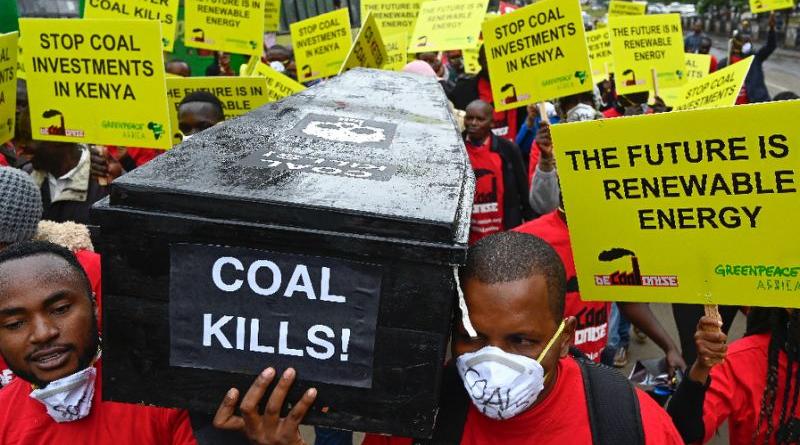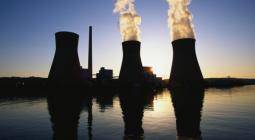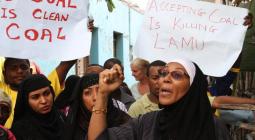Kenyans protest bid to build East Africa's first coal plant.

Scores of Kenyans on Wednesday protested against a project to build a coal power station near the Lamu archipelago, a popular tourist spot that includes a UNESCO World Heritage site and boasts vibrant marine life.
The power station, which has been in the planning stages for about six years, has faced fierce resistance from activists and local communities, and the National Environmental Tribunal is to rule on June 24 on the fate of the project.
A group of about 200 protesters carrying black coffins emblazoned with white skulls, as well as a miniature chimney spewing smoke, marched through downtown Nairobi on Wednesday chanting "coal is poisonous!"
"There is no need to build centralised dirty sources of energy such as coal to answer Kenya's energy demands, especially when the country is taking the lead in Africa with an 85-percent renewable energy base," said deCOALonize Campaign Coordinator, Omar Elmawi.
"With access to wind, solar, geo-thermal and tidal energy sources, Kenya's renewable energy potential is cost-efficient and causes no harm to the people and environment."
Campaigners argue the project is a costly and damaging venture that makes little sense at a time when most of the world is turning away from coal plants and investing in increasingly cheaper renewable energies.
"Countries are divesting away from coal and even China is moving away from coal investment towards renewable energy," Greenpeace representative Fredrick Njehu told AFP.
However the government sees it as a way to spur economic growth, create jobs, and ensure Kenya's energy supply in the future.
The bulk of the $2 billion project is being financed by China and it will be built by Amu Power, a joint venture between a Kenyan firm and Gulf Energy. Construction will be carried out by China Power Global.
Campaigners are also alarmed over Kenya's rising debt, which currently stands at around $50 billion of which over $6 billion is owed to China.
- 'Costly error' -
Experts have raised serious concerns about the project.
The US-based Institute for Energy Economics and Financial Analysis (IEEFA) this week released a report warning that due to a series of miscalculations, electricity from the plant will cost consumers 10 times more than estimated.
The report entitled "The Wrong Choice For Kenya" said the 981-megawatt facility would be a "costly error" for the country, with the 25-year contract requiring payment of $360 million annually even if no power is generated at the plant.
It says that Kenya's energy demand growth has been much lower than estimated, due to lower than expected economic growth, and that if built the plant would be "grossly underutilised".
"The government's own analysis demonstrates that... Kenya's abundant renewable resources render no new coal generation necessary in the country until 2029, at the earliest".
Amu Power in a statement Wednesday described the report's conclusions as "inaccurate" and said the plant would have a utilisation rate of 85 percent.
It will be the first coal-fired power station in East Africa and will import coal from South Africa until Kenya begins its own mining operations.
12 June 2019
ENERGY DAILY




